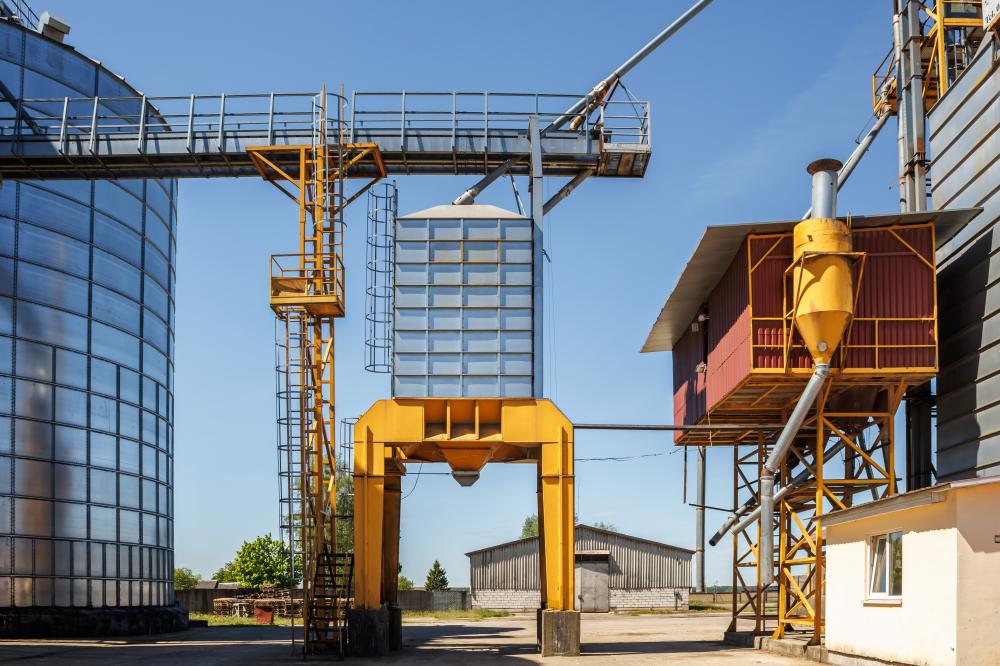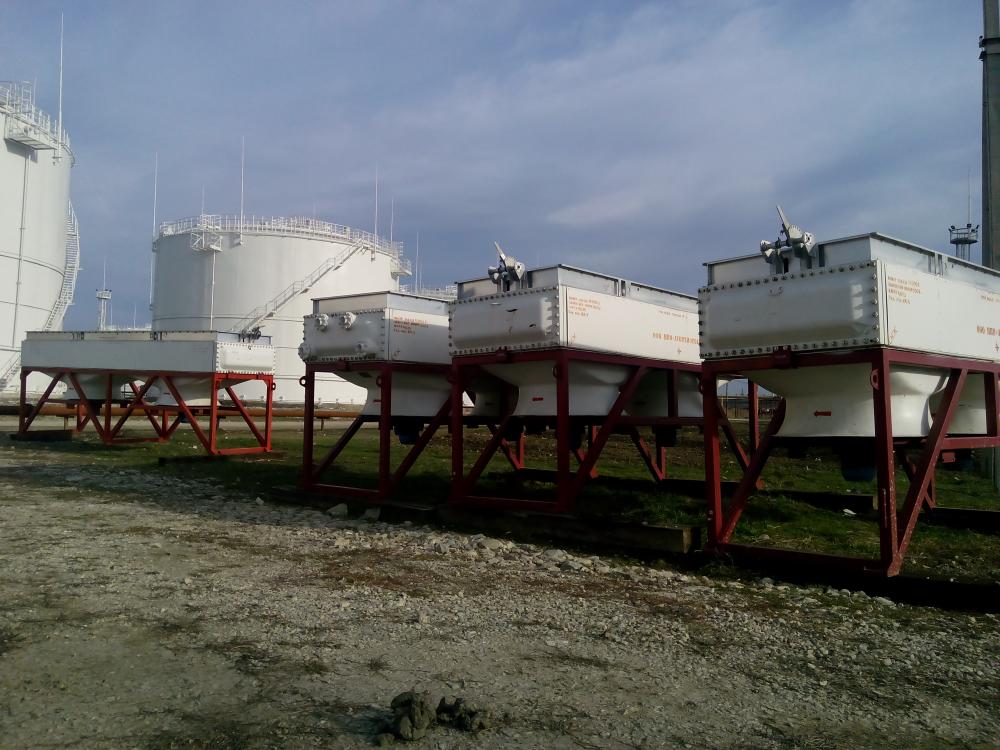
A Closer Look at Bagasse Dryers
In Louisiana, the sugar cane industry is both a critical component of the economy and a significant generator of agricultural waste, primarily in the form of bagasse. This byproduct, once considered a disposal challenge, has found new life as a fuel source, thanks to innovative drying technologies. Bagasse dryers from Player Design Inc. play a pivotal role in transforming this waste into a viable, renewable energy source, turning an environmental burden into an opportunity for sustainable development.
How Bagasse Dryers Work
Bagasse dryers are sophisticated systems engineered to reduce the moisture content of bagasse, the fibrous residue left after sugar cane is processed. By applying direct or indirect heating methods, these dryers prepare bagasse for combustion or further processing into biofuels. The drying process not only makes bagasse a more efficient fuel by increasing its calorific value but also reduces storage issues and the risk of spontaneous combustion, a common concern with high-moisture biomass.
Player Design Inc.’s Solutions
Unique System Design
Player Design Inc. (PDI) approaches the challenge of bagasse drying with bespoke solutions, understanding that each facility’s needs are unique. Their customized bagasse dryers are designed to integrate seamlessly into existing sugar processing operations, maximizing efficiency without compromising the production process. This tailoring ensures that each bagasse dryer Louisiana project contributes optimally to the client’s objectives of waste reduction and energy recovery.
Sustainability Focus
The environmental benefits of converting bagasse into biofuel are immense, aligning perfectly with PDI’s ethos of engineering a sustainable future. By transforming waste into energy, PDI’s bagasse dryer Louisiana installations help reduce greenhouse gas emissions and reliance on fossil fuels. This commitment to sustainability is not just about compliance; it’s about leadership in the movement towards renewable energy solutions.
The Economic Impact of Bagasse Drying
Implementing a bagasse dryer system is not merely an environmental decision; it’s a financially sound strategy. For Louisiana’s sugar mills, the ability to monetize a byproduct has tangibly positive implications for the bottom line. Reduced waste disposal costs, additional revenue streams from the sale of biofuel, and improved operational efficiency are just a few of the economic benefits that accompany the adoption of bagasse dryer technology. PDI’s role in this process extends beyond equipment supply; they serve as partners in optimizing the financial returns of their clients’ investments in biomass energy.
Challenges and Opportunities
Handling High Moisture Content
The high moisture content of bagasse presents a significant challenge in its conversion to biofuel. PDI’s engineering expertise allows them to design bagasse dryer Louisiana systems capable of efficiently reducing moisture to optimal levels for fuel use or further processing. This capability not only enhances the overall efficiency of the biomass-to-energy conversion process but also ensures that the final product meets the strict quality standards required for biomass fuels.
Scaling for Growth
As the demand for renewable energy sources grows, the ability to scale operations becomes increasingly important. PDI’s designs consider not just the current requirements of their clients but also future expansion possibilities. This forward-thinking approach ensures that investments in bagasse drying technology continue to pay dividends well into the future, supporting not just business growth but also the broader adoption of sustainable energy practices.
Case Studies
PDI’s portfolio of successful bagasse dryer Louisiana projects illustrates the practical benefits of their approach. For instance, a major sugar mill in the region was able to reduce its carbon footprint significantly while opening up new revenue streams by selling processed bagasse as biofuel. These case studies not only demonstrate the viability of bagasse drying as a sustainable business practice but also PDI’s ability to deliver on its promises of efficiency, reliability, and environmental responsibility.
Towards a Sustainable Future
The journey towards sustainability is fraught with challenges, but companies like Player Design Inc. are lighting the way with innovative solutions like bagasse dryer Louisiana installations. By turning agricultural waste into a resource, these initiatives are helping to shape a future where economic growth and environmental stewardship go hand in hand. As Louisiana’s sugar industry continues to evolve, the role of bagasse drying in promoting sustainability and driving economic benefits is likely to become even more significant.
Collaboration for Innovation
PDI’s success in the bagasse dryer market is not just a product of their technical expertise but also their collaborative approach. Working closely with clients, regulatory bodies, and the community, PDI ensures that each bagasse dryer Louisiana project aligns with broader goals of industrial efficiency, environmental sustainability, and community well-being. This collaborative ethos is crucial in navigating the regulatory landscape, securing buy-in from stakeholders, and ultimately in achieving the shared goal of a cleaner, more sustainable energy future.

How much is bagasse per ton?
The cost of bagasse per ton varies based on factors such as region, availability, and the specific processing methods used. In some instances, the cost is offset by the value bagasse represents as a biofuel or in the production of building materials. It’s a fascinating aspect of the biomass industry to see a byproduct like bagasse turned from what was once considered waste into a commodity with tangible value. This transformation not only reduces waste but also contributes to the circular economy, where every byproduct finds a secondary use. Can you imagine how this shifts the economic dynamics for industries dependent on sugarcane?
Is sugar cane still grown in Louisiana?
Yes, sugar cane is still very much grown in Louisiana. In fact, the state is one of the largest producers of sugar cane in the United States. The industry is a significant part of Louisiana’s agricultural landscape, contributing not only to the economy but also to the cultural heritage of the region. The growth of sugar cane supports a myriad of businesses and jobs, from farming to processing plants. Additionally, the advancements in sustainable practices, such as the use of bagasse as a biofuel, are helping to ensure that sugar cane remains an environmentally as well as economically viable crop for the state.
How much does a bagasse factory cost?
The cost of setting up a bagasse factory can vary widely depending on several factors like location, size of the operation, and the technology used for processing. Initial investments can run into the millions of dollars for large-scale operations that incorporate the latest in biofuel processing technologies. However, it’s essential to consider the long-term economic and environmental benefits that these factories bring. Not only do they contribute to reducing waste and greenhouse gas emissions, but they also generate income from what would otherwise be considered agricultural waste. The key is in the efficiency and sustainability of the operation, something that companies like Player Design Inc. strive to maximize in their projects.
What is bagasse dryer?
A bagasse dryer is a device or system used to reduce the moisture content of bagasse, which is the fibrous byproduct of sugarcane after the sugar juice has been extracted. The drying process increases the calorific value of bagasse, making it a more efficient fuel for generating energy. These dryers can use either direct or indirect heating methods and are a critical component in transforming bagasse into a viable, renewable energy source. By making bagasse dryer systems an integral part of their sugar processing operations, companies are able to improve operational efficiencies, mitigate environmental impact, and create additional revenue streams.
What sustainability benefits do bagasse dryers offer?
Bagasse dryers are at the heart of transforming waste into energy, offering substantial sustainability benefits. By reducing the moisture content of bagasse, these dryers significantly enhance its fuel properties. This process not only diverts waste from landfills but also provides a renewable source of energy, thereby reducing reliance on fossil fuels. Moreover, the process of drying bagasse decreases the risk of spontaneous combustion, enhancing safety and reducing storage issues. The environmental footprint of sugarcane processing operations can be significantly minimized, aligning with global efforts towards minimizing climate change impacts. A fine example of turning a challenge into an opportunity, wouldn’t you agree?
What are the economic implications of implementing bagasse drying technology?
Implementing bagasse drying technology carries profound economic implications for the sugar industry and beyond. Initially, it might seem like a substantial investment. However, the ability to convert bagasse into a higher value-added product such as biofuel can transform an operational cost into a lucrative revenue stream. Moreover, the reduction in waste disposal costs and the improvement in operational efficiency further enhance the economic attractiveness of this technology. Companies like Player Design Inc. play a pivotal role in this, providing not just the equipment but also the expertise to optimize these financial returns. This technological adoption ultimately contributes to a more sustainable and economically vibrant bioenergy sector. Isn’t it remarkable how innovation can turn what was once waste into a cornerstone of a new economic model?
What does the future hold for bagasse drying technologies?
The future of bagasse drying technologies looks promising and is geared towards even greater efficiency and environmental sustainability. As the global demand for renewable energy sources increases, innovations in drying technologies continue to evolve. Future developments may include more energy-efficient drying processes, integration with other renewable energy systems, and advancements in automation for improved operational efficiency. This progress is not just about technological advancements but also about fostering a more sustainable, circular economy. With companies like Player Design Inc. leading the way, the potential for these technologies to contribute to global sustainability goals while offering economic benefits makes the future of bagasse drying an exciting one indeed. How do you envision these innovations shaping our approach to renewable energy and waste management?
Resources
- United States Department of Agriculture (USDA) – The USDA provides information on agricultural practices, including the utilization of waste products like bagasse in the sugar industry.
- Environmental Protection Agency (EPA) – The EPA offers resources on renewable energy sources and environmental impact assessments related to biomass energy.
- National Renewable Energy Laboratory (NREL) – NREL conducts research on renewable energy technologies, including biofuels, which can be useful in understanding the sustainability of bagasse drying.
- U.S. Department of Energy – The DOE provides insights into energy policies, research, and initiatives that may affect the adoption of biomass energy solutions like bagasse drying.